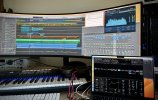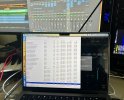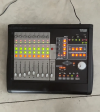JoeW-NC
Member
It CAN be closed. . . I don't recommend based on my experience with 2017 Quad i7 MBP. I found my laptop would get hot in closed "clamshell" mode, so I assume the entire aluminum surface of the laptop is a key to passive cooling before the fans kick in. With the lid closed, they ran constantly. They're not too loud, but still kinda annoying. I dim the laptop display to "off" so it's not distracting, and use the built-in keyboard and excellent, oversized track pad to zoom in tight to any area I'm working on. I lay out my Digital Performer interface essentially in quadrants - Transport and main editor, mixer, floating plugins. . . and zoom in wherever I need. It's far more efficient than dealing with stacked windows once you get the hang of it.Rookie question - does the laptop have to be open to run (At home I'd use bluetooth keyboard and trackpad).
Rather than paying Apple display prices, I opted for a 32" 4K Samsung monitor that currently sells for $339 at Bestbuy (model# U32J590).









